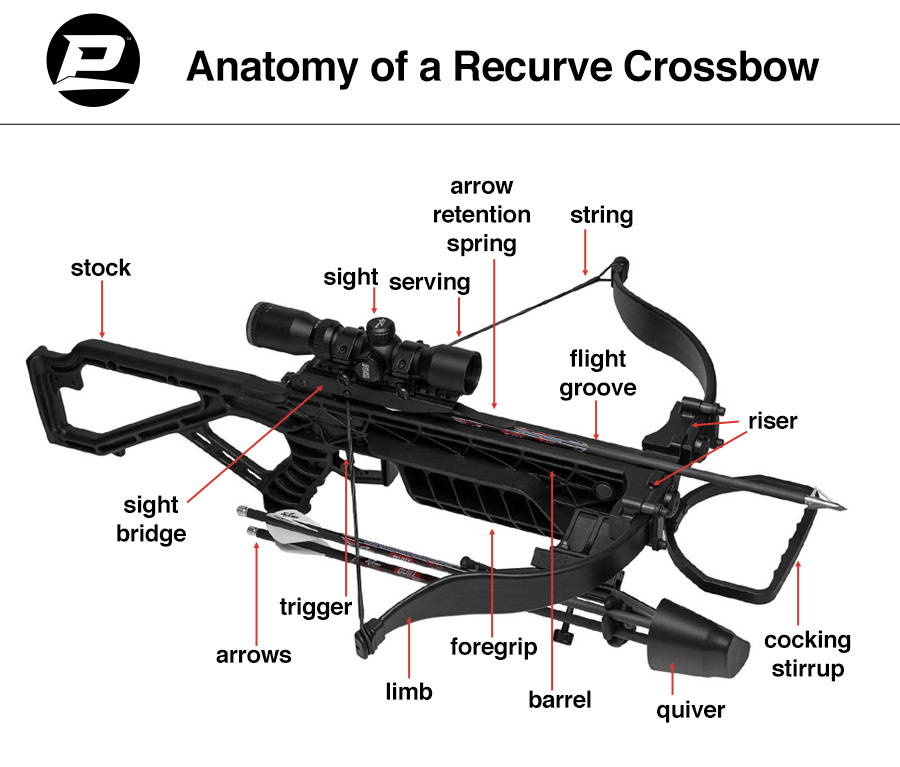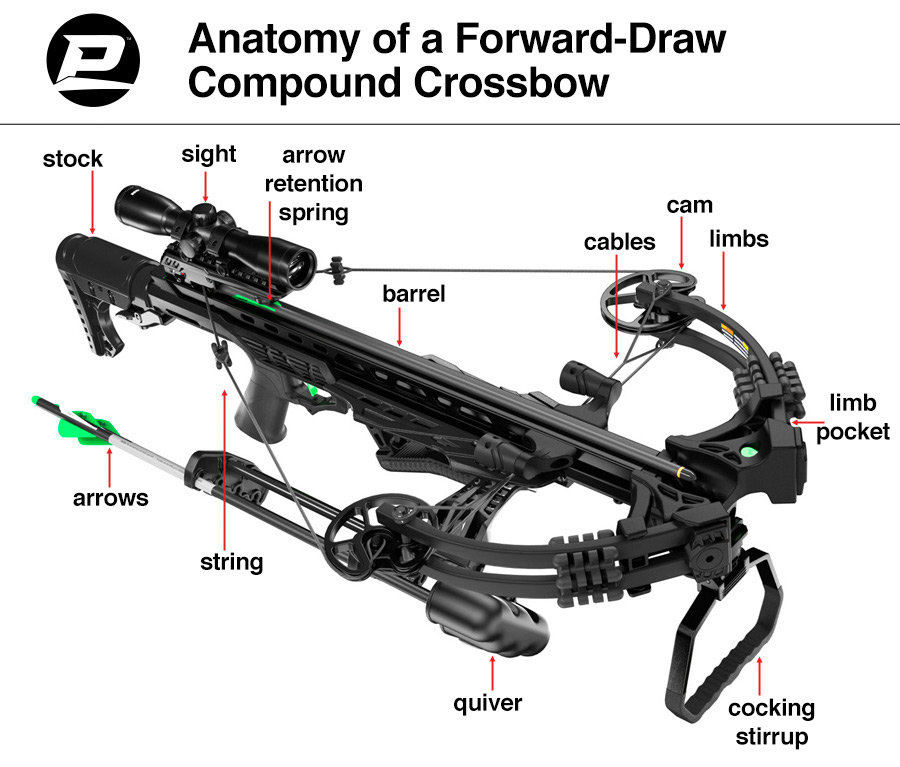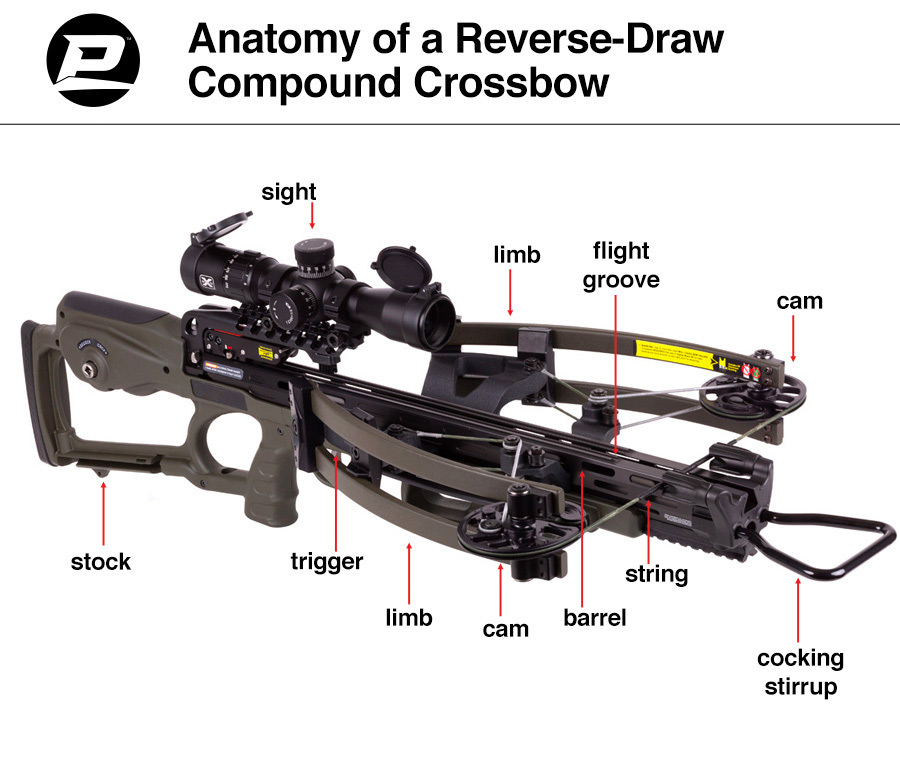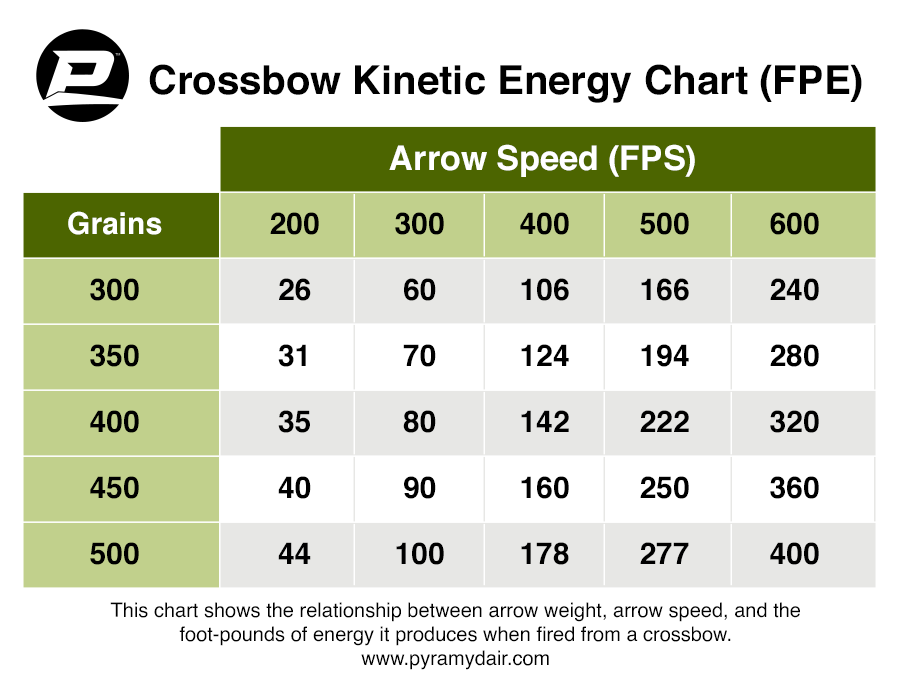Whether you're an experienced hunter, a target shooting enthusiast, or simply curious about this unique weapon, choosing the right crossbow can be an exciting yet challenging task. With a myriad of options available in today's market, it's easy to feel overwhelmed. But fear not! This guide is designed to help you navigate the world of crossbows, breaking down the essential factors to consider and empowering you to make an informed decision.
From understanding the different types and their uses to exploring key features and performance metrics, we'll cover everything you need to know to find the perfect crossbow that matches your needs, skill level, and budget. Whether you're looking to continue a family hunting tradition, improve your target shooting skills, or simply add a new dimension to your outdoor adventures, this comprehensive guide will set you on the right path.
So, let's dive in and discover the crossbow that's just right for you, combining the best of historical legacy with cutting-edge technology for an unparalleled shooting experience.
Uses
Regarding crossbows, you can choose between two popular purposes:
- Hunting: Prioritize speed and power for quick, ethical kills
- Target Shooting: Focus on precision and ease of use for practice sessions
Hunting crossbows tend to be heavier than those designed for target shooting. The added weight provides stability and helps absorb the recoil generated upon firing, ensuring accuracy and a precise shot.
Additionally, due to the draw weights and the increased tension on the strings and cables, hunters may need to change them more frequently than target shooters. Regular maintenance helps maintain the crossbow's optimal performance and safety.
Types of Hunting
Tree Stand
This method involves positioning yourself on an elevated platform like a tree stand to gain a vantage point over your prey. The compact size and maneuverability of crossbows designed for tree stand hunting are crucial.
Saddle
Saddle hunting has gained popularity in recent years, allowing hunters to use a lightweight and portable saddle system to achieve stealth and flexibility in various hunting environments. Crossbows are compatible with saddle hunting and often prioritize compactness and ease of use.
Pack/Hike/Long Distance
Crossbows designed for packing, hiking, or long-distance hunting are ideal for hunters who prefer covering long distances or embarking on challenging terrains. These models prioritize lightweight construction without compromising power, allowing for extended periods of carrying and maneuvering.
Ground Blind
Hunting from a ground blind requires a crossbow that allows for steady aiming and ease of use in confined spaces. Crossbows suited for ground blind hunting often strike a balance between maneuverability and power.
Target Shooting
In contrast to hunting, target shooting with a crossbow focuses on precision and repetition. Many enthusiasts opt for lighter crossbows with lower draw weights when engaging in target practice. This choice allows for more shots before needing to change strings or cables, resulting in extended sessions without interruption.
Additionally, lighter crossbows are easier to cock, making the reloading process smoother and more efficient. This aspect is particularly important during target practice when repetitive shooting is involved. Furthermore, the lighter arrows used for target shooting are less likely to become stuck in the target, making retrieval hassle-free.
Once you've decided on the activity you want to do with your crossbow, the next step is to determine which type of crossbow you'd like to use.
Platform
When choosing a crossbow, another critical consideration is whether to opt for a recurve or a compound design. Each type of crossbow offers unique features and benefits.

Recurve Crossbows
Recurve crossbows are known for their simplicity, reliability, and lightweight construction. These crossbows feature limbs that curve away from the shooter when unstrung, providing a distinct and traditional appearance. The main advantage of recurve crossbows is their lighter weight, making them easier to carry and maneuver during hunting and target shooting sessions.
In addition, recurve crossbows offer the convenience of being able to change the string without requiring a bow press. This can benefit those who prefer to perform maintenance or switch out strings themselves.
Compound Crossbows
Compound crossbows, on the other hand, showcase a more intricate and technologically advanced design. One notable characteristic of compound crossbows is their narrower profile compared to recurve models. This narrower frame allows for improved maneuverability and ease of use, particularly in tight spaces or dense hunting environments.
Compound crossbows can be further categorized based on their cam system. Two common types are the forward draw and reverse draw compound crossbows.

Forward Draw Crossbows
These crossbows feature a cam system positioned at the front of the limbs. The forward draw design enhances balance and stability, reducing recoil and increasing accuracy. Many hunters and target shooters favor the forward draw configuration due to its reliable performance.

Reverse Draw Crossbows
In contrast, reverse draw compound crossbows have their cam system situated at the rear of the limbs. This unique configuration offers several benefits, including increased power stroke, reduced noise and vibration, as well as a more balanced weight distribution. Reverse draw compound crossbows are often preferred by those seeking enhanced accuracy and a quieter shooting experience.
Choosing between a recurve or a compound crossbow ultimately depends on your personal preferences, shooting style, and intended use. Consider weight, maintenance convenience, maneuverability, and shooting characteristics to determine which type best fits your needs and goals.
"The bow you select is a personal choice based on what features you value the most, budget, and what type game or target you will be shooting. If you are just starting with crossbows, start with a more affordable bow with as many features as you want. Experience the enjoyment of crossbow shooting and note what you like and don't like before investing in the higher-end bows."
Size
When selecting a crossbow for hunting or target shooting, consider the size of the crossbow, including its length, width, and weight. These factors significantly determine the crossbow's maneuverability, ease of use, and overall shooting experience.
Balance these factors for your hunting and target practice needs:
- Length: Longer crossbows offer better stability and accuracy
- Width: Narrower designs provide easier maneuverability in tight spaces
- Weight: Lighter crossbows reduce fatigue during long hunting trips
Length
In hunting scenarios, a longer crossbow provides increased stability and accuracy. The longer power stroke generated by a lengthier crossbow allows for higher arrow speeds, ensuring better kinetic energy and improved penetration. Moreover, a longer crossbow often offers a more comfortable and balanced shooting stance, reducing fatigue during extended periods of use.
A longer crossbow can enhance precision and consistency for target shooting purposes. The extended length allows for a more extended sight radius, promoting better aim and target acquisition. Additionally, the increased stability provided by a longer crossbow aids in minimizing hand movements and vibrations, resulting in tighter groupings and improved shot placement.
Width
For hunting, a narrower crossbow offers several benefits. It allows for easier maneuverability in tight spaces like dense forests or cramped hunting blinds. The compact size aids in reducing the chances of the crossbow getting tangled in the branches or obstructed by vegetation. Furthermore, a narrower crossbow can be more comfortable to carry and transport, particularly during long hunting trips.
For target shooting, a narrower crossbow contributes to increased stability and accuracy. The shooter can achieve a more consistent and repeatable shooting form by reducing the width. Additionally, the narrower profile helps minimize the effect of wind resistance on the arrow's flight path, resulting in improved accuracy and tighter groupings.
Weight
A lighter crossbow is generally favored in hunting scenarios, allowing for easier carrying and stalking. Lighter weight reduces fatigue, enabling hunters to navigate challenging terrains and pursue game for longer periods. However, it's important to strike a balance between weight and stability, ensuring that the crossbow is not too light to compromise accuracy and shooting performance.
For target shooting, weight is less of a concern as the crossbow is typically set up in a stationary position. However, a heavier crossbow can offer stability and reduced vibration advantages. The additional weight helps dampen any potential hand movements, resulting in a steadier aim and improved shot consistency.
When selecting a crossbow, consider your specific hunting or target shooting requirements and physical capabilities. Finding the right balance between length, width, and weight will create a more enjoyable and successful shooting experience.
Considerations
Pay attention to:
- Draw Weight: Compound crossbows generally offer easier cocking
- Arrow Speed and Kinetic Energy: Higher speeds and energy improve hunting effectiveness
- Power Stroke: Longer power strokes increase arrow velocity
Draw Weight
Recurve crossbows, known for their simplicity and elegance, tend to have a heavier draw weight than compound crossbows, meaning it is more difficult to draw the string on recurve crossbows than compound crossbows. This is because the recurve crossbows lack the mechanical advantage provided by the pulley system of the compound crossbows. As a result, more physical effort is required to draw the string. A recurve crossbow starts easy to draw and gets harder as it approaches its full draw length.
Compound crossbows, on the other hand, use a cam and cable system. This design reduces the force needed to achieve the same draw weight as recurve crossbows. A compound crossbow becomes easier to draw as its full draw length is achieved because the cams help balance the weight.
Crank devices give you an additional mechanical advantage making cocking your crossbow easy. A crank is a specialized tool that helps you draw the string with minimal physical effort, allowing you to use a crossbow with a draw weight you usually would not be able to pull using physical force. It not only makes the cocking process more manageable but also ensures consistent, safe cocking. Some crossbows come with an integrated crank to make them more user-friendly.
Maintenance Tips
- Balance your axle-to-axle distance with your draw weight. A narrower axle-to-axle distance increases the pressure on the string, causing more wear on the serving and string.
- Measure the axle-to-axle distance each time you bring your bow out of storage and monitor it for variation through the season.
- Periodically inspect the string for string stretching. Be vigilant in monitoring for serving separation and inspect the string and cables for any signs of fraying.

Arrow Speed & Power
Arrow speed is crucial in determining your shot's overall performance and effectiveness. Arrow speed refers to the velocity an arrow travels after being released from the crossbow. On the other hand, kinetic energy relates to the power produced when the arrow strikes the target. The two are closely related when it comes to crossbow performance.
As arrow speeds increase, so does the arrow's kinetic energy. This is because the more potential energy put into the arrow, the greater the force imparted by the arrow on impact with a target. Increasing the kinetic energy of your arrows requires heavier draw weights and longer power strokes.
The power stroke is the distance the crossbow's string pushes the arrow. It is determined by the crossbow body's length and the draw's direction. A reverse-draw compound crossbow will generally have the longest power stroke because of the position of the cams at the rear of the limbs. This allows an additional few inches to the power stroke since the string travels nearly to the end of the body.
When hunting, more kinetic energy is desirable to provide ethical kills. More kinetic energy provides better penetration, allowing it to overcome resistance from the target. It can also compensate for longer shooting distances where the arrow could lose power due to wind resistance.
Hunting Tip: Power Needed to Hunt Deer
The power needed for harvesting a deer is determined by the size and weight of the deer, but most experts recommend a minimum of 40 foot-pounds of energy to ensure sufficient power for pass-through.
It is important to note that while arrow speed and kinetic energy are essential considerations, shot placement and accuracy are equally critical. Proper shot placement, aiming for vital organ areas like the heart and lungs, can increase the chances of a clean kill, even with lower kinetic energy levels.
Safety Features
Look for these essential safety mechanisms:
- Anti-Dry Fire: Prevents firing without an arrow loaded
- Trigger Safety: Adds an extra layer of protection against accidental discharge
- Cocking Safety: Secures the bowstring during the cocking process
Dry firing can cause significant damage to the crossbow and potentially lead to personal injury. Anti-dry firing mechanisms ensure the trigger cannot be pulled unless an arrow is loaded correctly and engaged with the string.
Trigger safeties usually involve a lever or switch that must be engaged or disengaged before pulling the trigger.
Cocking safeties include ambidextrous safety switches or automatic safety engagement. These features help keep the bowstring locked securely until the shooter is ready to fire.
It's important to note that while these safety features are designed to enhance the overall safety of crossbows, responsible handling and use are equally essential. Always familiarize yourself with the safety features and instructions your crossbow manufacturer provides. Additionally, proper storage, transportation, and handling practices must be followed to minimize the risk of accidents and ensure a safe and enjoyable crossbow shooting experience.
When selecting your crossbow, prioritize features that align with your family's needs and skill levels. Consider how each option will perform during your camping trips and hunting excursions. Remember to balance quality and performance with your budget constraints.
By thoroughly researching and comparing different models, you'll be able to find a crossbow that not only meets your requirements but also helps you improve your skills and teach your children the art of archery and hunting.
Additional Features to Consider
- Cocking Device: a handy tool that assists in drawing and cocking the crossbow, reducing strain and ensuring consistent performance
- Scope: an optical device mounted on the crossbow to enhance accuracy and precision by providing a clear sight picture and aiming points
- Silencing Equipment: accessories like limb dampeners and string stoppers that minimize noise and vibration generated by the crossbow during shooting
- Extra Bolts: additional arrows for your crossbow, useful for extended shooting sessions or as backups in case of misplacement or damage
- Quiver: a container or attachment for holding and carrying bolts, conveniently keeping them within reach while on the hunt or at the range
- Bow Case: a protective case designed to safeguard your crossbow during transportation and storage when not in use
- Lighted Nocks: illuminated attachments fitted to the rear of arrows, aiding visibility and arrow retrieval in low-light conditions
- Extra Field Points: spare practice points that can be interchanged with the tips of your arrows for target practice
- Matching a Target with Your Bow: ensuring compatibility between the draw weight, speed, and arrow type of your crossbow with the specific target you plan to shoot, ensuring optimal performance
When choosing the right crossbow and its accompanying accessories, it's crucial to prioritize your needs, conduct thorough research, and evaluate how well each item aligns with your criteria and budget. Understanding your shooting requirements, such as the purpose, desired features, and performance expectations, will help you make informed decisions. Take the time to explore the safety features, functionality, and compatibility of different options. Doing so ensures that your crossbow setup meets your needs and provides an enjoyable and successful shooting experience.
If you would like more information about crossbows, please read some of our other resources:






